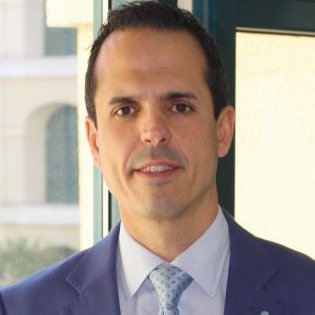Selected Papers from the 2nd Global Conference on Applied Physics, Mathematics and Computing (APMC-18)
A special issue of Mathematical and Computational Applications (ISSN 2297-8747).
Deadline for manuscript submissions: closed (31 December 2018) | Viewed by 9302
Special Issue Editor
Special Issue Information
Dear Colleagues,
Please visit this site http://physicsmathcomputing.com/ for a detailed description of this Special Issue. The Special Issue will mainly consist of selected papers presented at the "2nd Global Conference on Applied Physics, Mathematics and Computing (APMC-18)". Papers considered to fit the scope of the journal and of sufficient quality, after evaluation by the reviewers, will be published free of charge. The main topics of this Special Issue are:
Applied Mathematics
- Mathematical modelling, simulation and optimization
- Applied partial differential equations
- Numerical analysis and mathematical methods
- Mathematical modeling in materials science and biology
- Nonlinear problems in mechanics
- Homogenisation and multiscale analysis
- Inverse problems
- Algebra and its application
- Differential equations, dynamical systems and their applications
- Fuzzy mathematics and its applications
- Geometry and its application
- Statistical methods in technical and economic sciences and practice
- Probability and decision theory
- Design of experiments
- Game theory
Applied Computing
- Computer Applications in Science and Engineering
- Modeling and Simulation
- Computational chemistry and physics. Computational materials
- Computational fluid dynamics
- Computation and data enabled social science. Business and Social Issues
- Computer Science
- Bioinformatics and computational biology
- Information Technology
- Web Technology
- Measurement Technologies
- Software Design and Development
- Simulation Tools
- Formal Methods
- Networking and Internet of Things
- Artificial Intelligence
- Trends and Applications in Accessibility
Prof. Dr. Israel González Carrasco
Guest Editor
Manuscript Submission Information
Manuscripts should be submitted online at www.mdpi.com by registering and logging in to this website. Once you are registered, click here to go to the submission form. Manuscripts can be submitted until the deadline. All submissions that pass pre-check are peer-reviewed. Accepted papers will be published continuously in the journal (as soon as accepted) and will be listed together on the special issue website. Research articles, review articles as well as short communications are invited. For planned papers, a title and short abstract (about 100 words) can be sent to the Editorial Office for announcement on this website.
Submitted manuscripts should not have been published previously, nor be under consideration for publication elsewhere (except conference proceedings papers). All manuscripts are thoroughly refereed through a single-blind peer-review process. A guide for authors and other relevant information for submission of manuscripts is available on the Instructions for Authors page. Mathematical and Computational Applications is an international peer-reviewed open access semimonthly journal published by MDPI.
Please visit the Instructions for Authors page before submitting a manuscript. The Article Processing Charge (APC) for publication in this open access journal is 1400 CHF (Swiss Francs). Submitted papers should be well formatted and use good English. Authors may use MDPI's English editing service prior to publication or during author revisions.





